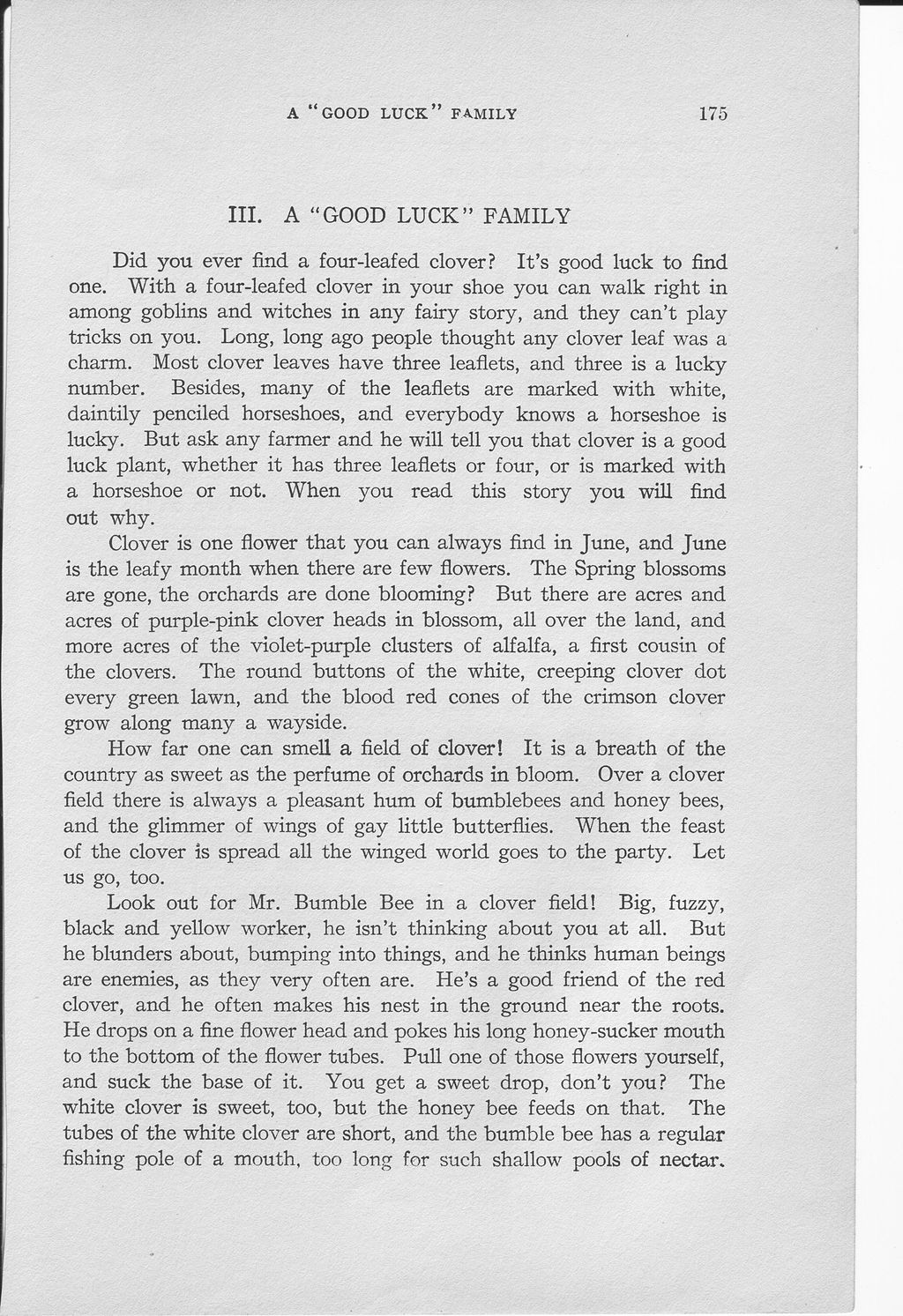A "Good Luck" Family
Did you ever find a four-leafed clover? It's good luck to find one. With a four-leafed clover in your shoe you can walk right in among goblins and witches in any fairy story, and they can't play tricks on you. Long, long ago people thought any clover leaf was a charm. Most clover leaves have three leaflets, and three is a lucky number. Besides, many of the leaflets are marked with white, daintily penciled horseshoes, and everybody knows a horseshoe is lucky. But ask any farmer and he will tell you that clover is a good luck plant, whether it has three leaflets or four, or is marked with a horseshoe or not. When you read this story you will find out why.
Clover is one flower that you can always find in June, and June is the leafy month when there are few flowers. The Spring blossoms are gone, the orchards are done blooming? But there are acres and acres of purple-pink clover heads in blossom, all over the land, and more acres of the violet-purple clusters of alfalfa, a first cousin of the clovers. The round buttons of the white, creeping clover dot every green lawn, and the blood red cones of the crimson clover grow along many a wayside.
How far one can smell a field of clover! It is a breath of the country as sweet as the perfume of orchards in bloom. Over a clover field there is always a pleasant hum of bumblebees and honey bees, and the glimmer of wings of gay little butterflies. When the feast of the clover is spread all the winged world goes to the party. Let us go, too.
Look out for Mr. Bumble Bee in a clover field! Big, fuzzy, black and yellow worker, he isn't thinking about you at all. But he blunders about, bumping into things, and he thinks human beings are enemies, as they very often are. He's a good friend of the red clover, and he often makes his nest in the ground near the roots. He drops on a fine flower head and pokes his long honey-sucker mouth to the bottom of the flower tubes. Pull one of those flowers yourself, and suck the base of it. You get a sweet drop, don't you? The white clover is sweet, too, but the honey bee feeds on that. The tubes of the white clover are short, and the bumble bee has a regular fishing pole of a mouth, too long for such shallow pools of nectar.

